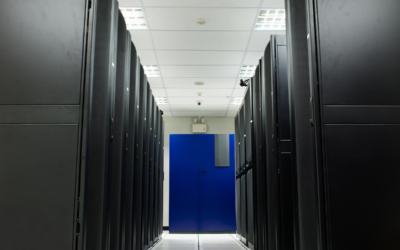Cloud vs. Colocation: What to Consider16 min read

While many organizations have moved away from on-premise data centers in the past decade, where they go (or should go) is a topic of much debate. And as many enterprise decision-makers weigh their options, some ultimately realize they don’t want to fully embrace the cloud just yet, and opt for a colocation provider instead. In some cases, even the organizations that did fully embrace migrating to the cloud have pulled back from their original commitment, in what’s being dubbed as cloud repatriation. One study found that 58% of respondents noticed a trend of people moving away from the cloud and at least partially going back to other options, including colocation. However, the research report still asserted that the cloud isn’t going anywhere. Here are some important considerations for helping people choose between the cloud and colocation.
Facility Building Cycles
The rise of hyperscale data centers has caused the relevant facilities to become progressively more extensive and advanced. Thus, if a decision maker’s cloud plans center on taking advantage of a facility under construction, they may need to accept longer construction timelines compared to those associated with colocation facilities.
Alan Howard, Omdia’s principal analyst in the Cloud and Data Center Research Practice, explained, “Cloud and colocation service providers have rather different building schedules. Colocation providers are usually right on the money opening data centers as scheduled, which is a function of meeting customer demand. Cloud data center build cycles, on the other hand, can span anywhere from 12 months to 30 months, and occasionally longer.”
A 2021 Omdia survey found that 49% of respondents indicated the COVID-19 pandemic accelerated their use of colocation centers. On the other hand, 23% of those polled held off on their colocation deployments.
However, when efficiency is a primary concern associated with either the cloud or a colocation center, potential customers can prioritize fully constructed and operational facilities when choosing where to take their business.
Opportunities for Using and Maintaining Company Equipment
Scalability is often one of the driving factors that pushes enterprise leaders to consider the cloud. When they don’t have the budget to invest in the new equipment necessary for a desired expansion, the cloud seems like an appealing solution.
However, sometimes customers want and need to use their own equipment. For example, some people at on-premise call centers traditionally used location-based infrastructure and company-owned servers. Likewise, business leaders may conclude that their operational needs do not fit with the cloud-based model, which relies on the provider’s equipment.
Some leaders balk at moving to the cloud because they believe it represents a loss of control. Colocation providers enable customers to continue maintaining their equipment the same way they would if it was on-site. That’s because they only own the space leased to customers.
However, if a colocation customer wishes to avail of such options, they can usually pay more to have someone else handle the upkeep. Taking that approach reduces or eliminates trips to the facility and provides 24/7 support.
Options for Achieving Resiliency
The leading cloud providers have high availability guarantees, but they still experience occasional outages. Colocation centers are not foolproof in that regard, but they have comparatively more offerings to help their customers remain resilient despite challenges.
For example, colocation centers provide the option of managed data backup services, helping a customer’s operations run smoothly during difficulties. Representatives can also help people plan and secure their infrastructure, which could make it less vulnerable to cyberattacks that would otherwise compromise resiliency.
However, the cloud computing sector generates more than $250 billion per year, and companies know their clients increasingly prioritize security and resilience. That’s why public cloud providers often manage necessities like security patches.
On the resilience side of things, Gartner analyst Lydia Leong takes issue with the trend of using a multicloud strategy to build resilience. She explained, “Hyperscale cloud providers are full of moving parts — lots of components, assembled together into something that looks and feels like a cohesive whole. Each of those components has its own form of resilience, and some of those components are more fragile than others.”
Leong advocated for a different approach, saying, ”The huge cost and complexity of a multicloud implementation is effectively a negative distraction from what you should actually be doing that would improve your uptime and reduce your risks, which is making your applications resilient to the types of failure that are actually probable.”
No Universally Best Choice
Although increasing evidence suggests a significant percentage of people are not ready for full commitments to the cloud, that doesn’t mean the model is without notable advantages. Making the most appropriate choice for a company’s needs requires a thoughtful approach.
Real-time monitoring, data-driven optimization.
Immersive software, innovative sensors and expert thermal services to monitor,
manage, and maximize the power and cooling infrastructure for critical
data center environments.
Real-time monitoring, data-driven optimization.
Immersive software, innovative sensors and expert thermal services to monitor, manage, and maximize the power and cooling infrastructure for critical data center environments.

Devin Partida
Editor-in-Chief at ReHack
Devin Partida writes about data, cybersecurity and smart tech for ReHack.com, where she is also the Editor-in-Chief.







0 Comments